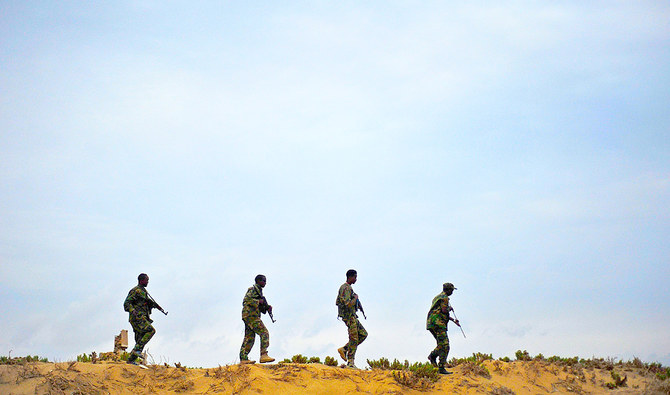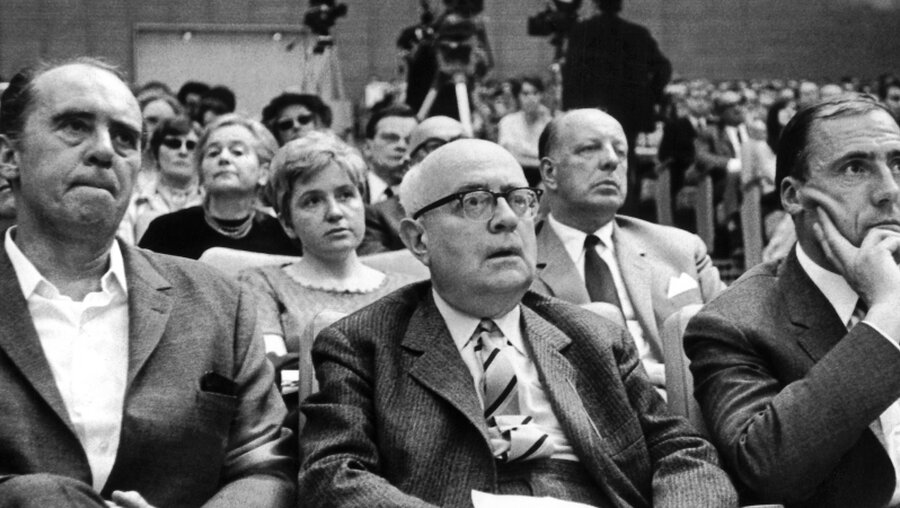It is difficult to hide a certain satisfaction upon witnessing the collapse of bitcoin. Since I last dealt with the topic for Sidecar seven months ago, the total capitalization of cryptocurrencies has decreased from $2.6 trillion – equivalent to the total GDP of France – to only $901 billion (as of 15 June). One feels sorry, but only a little, for those gullible people who invested their modest savings in crypto currencies hoping for easy profits and got fleeced by another pyramid scheme – an updated version of the seventeenth-century tulip fever in the Netherlands, history’s first senseless financial bubble.
This schadenfreude is all the greater since the cryptocurrency crash particularly affects Elon Musk – in theory the world’s richest man, with assets valued at $268 billion. In the media, Musk is depicted as contemporary capitalism’s very own Tony Stark, alter ego of the Marvel superhero Iron Man: a business magnate, playboy, philanthropist, inventor and scientist. In 2019, Musk decided to accept cryptocurrencies as payment for the electric vehicles produced by his company Tesla. The following year, he invested $1.5 billion in the cryptocurrency Dogecoin. Musk has relied on the fact that the cryptocurrency market is controlled by a small number of people who are able to manipulate its ebbs and flows (save any sudden waves of panic). For several years these capitalists propped up the value of their investments in bitcoin by continuing to accumulate cryptocurrencies, just as public companies do when they inflate their own shares through ‘buybacks’.
In the space of a year, however, Dogecoin has lost over 80% of its value, dropping from $40 billion to $6.9 billion. Undeterred, Musk has continued to assert his faith in the venture, relaunching it in May as a means to pay for the merchandising of his space corporation, SpaceX. Every announcement made by Musk is followed by a rise in the price of Dogecoin: a fact that illuminates the mechanism through which this new form of capitalism increases the fortunes of its standard-bearers. The capitalist announces on social media that they will buy a given share. Their followers (or, perhaps more aptly, believers) rush to buy the same shares, which experience a vertiginous surge, after which the capitalist cashes in by selling a part of the bloated stock, easily covering the cost of the initial purchase.
What’s producing revenue here is influence. In Musk’s case, influence is accrued through his own comic-book persona: he will continue to amass wealth so long as he is seen as a Stark-like figure. This is how his image as the Iron Capitalist remains credible. For this reason, Twitter is the most efficient financial tool at his disposal: his 91 million followers scattered around the world are his real capital. Hence why on 4 April the value of Twitter’s shares increased by 27% after Musk announced he had bought 9% of the company’s stock (Dogecoin also went up 20% as a result). It stands to reason that Iron Man would want to control the source of his revenue by investing in it.
Musk’s adherence to this superhero persona is therefore not only – or not even primarily – a vain ostentation, but quite literally a question of economic interest. Throughout his career as an entrepreneur he has carefully fashioned his image as an inventor or scientist (even if he dropped out of his graduate studies in material sciences at Stanford after only two days). As Forbes emphatically proclaims, ‘Elon Musk is working to revolutionize transportation both on Earth, through electric car maker Tesla – and in space, via rocket producer SpaceX’. Musk must constantly renew these superheroic credentials, investing in fanciful, futuristic projects reminiscent of science-fiction: electric cars, space exploration, artificial intelligence and neurotechnology. The key is to launch a new project before the previous one has been completed; new investments make earlier ones look profitable, thereby raising the value of their stock.
Exemplary in this regard is the story of Tesla, the electric vehicle company which, without having established a foothold in the industry (how many Teslas do you see driving around?), launched itself into the field of self-driving cars, with predictably disastrous results. As of 20 February, Tesla cars had caused 11 accidents, 17 casualties and one fatality. But, for Musk, the mere promise of automated cars served to obfuscate the broader failure of the electric vehicle. Tesla went public in 2010, after receiving $500 million worth of financing from the US government. From 2010 to 2019 its value increased, but at a fairly typical pace for an innovative tech company in a period of quantitative easing. (At this time, investment funds were able to take out billions in interest free-loans, and, without quite knowing where to channel it all, invested in companies that were seen as promising; it’s this that underpinned the enormous boom in stocks, despite the near-stagnant real economy). Over the following two years, the company truly went into orbit, peaking at $1.2 trillion in November 2021, before sinking to $662 billion as of 15 June.
This valuation does not correspond in any way to Tesla’s ‘real’ size, which remains modest both in terms of vehicles produced (305,000 the whole of last year) and sales ($54 billion). In comparison, the Volkswagen group had a revenue of $250 billion and produced 5.8 million cars, but its capitalization only amounted to $167 billion. The ascent of Tesla was also fuelled by the growth of bitcoin, the promise of space exploration and, in 2021, the long-publicised touristic rocket ‘excursion’, which helped SpaceX surpass the $100 billion valuation threshold. In this way, the SpaceX and bitcoin boom retroactively triggered the rise of Tesla.
As we’ve seen, the valuation of Musk’s enterprises, as well as the aleatory estimates of his wealth, have always been based on the promise of future expansion: achievements that are just out of reach, just over the next hill. His trust in bitcoin therefore indicates more than just a speculative opportunism; it embodies the business model that operates across his various industries. It also demonstrates that the influence exercised by Musk through Twitter doesn’t only affect small investors (those that Italian stock traders call parco buoi, ‘the flock’), but also ‘professionals’: stockbrokers, financial advisors, fund managers and so on.
Every epoch has an entrepreneur who symbolizes its particular style of capitalism. At the end of the nineteenth century, during the robber baron era, it was the evangelist of modern billionaire philanthropism, Andrew Carnegie and his Gospel of Wealth (1889). Then it was Henry Ford, the fascist-sympathizing industrialist behind the Model T, who shocked the world by paying his workers five dollars per day and was deemed ‘the one great orthodox Marxist of the twentieth century’ by Alexandre Kojève. The post-World War II period, with its social democratic compromise, lacked Promethean entrepreneurs of the kind envisaged by figures such as Werner Sombart and Joseph Schumpeter. Yet in the 1980s the mythos of the entrepreneur was revived with the rise of Reaganism. Richard Branson emerged as the fitting stepson of Thatcher, whose privatizations and deregulations paved the way for Virgin Atlantic and Virgin Healthcare. In 1986 the then Prime Minister appointed him ‘litter tsar’, tasked with ‘keeping Britain tidy’. Later, the Blair government entrusted him with managing part of the newly privatized British rail infrastructure.
Branson inaugurated the era of the performer-entrepreneur, a man of showbiz more than business, foreshadowing the new generation of moguls who operate on social media. Mark Zuckerberg, who deftly exploited Facebook to build his own personal brand, was the first. Then, in truly cinematic fashion, entered Iron Man Elon. Yet these symbolic figures aren’t necessarily the most significant ones. John Rockefeller or John Pierpont Morgan were far more important than Carnegie, even if they never embodied an epochal style. Bill Gates was just as important as Steve Jobs (himself a mythical character, though he died before the new wave of social media). In the same way, Amazon’s Jeff Bezos shapes our lives far more than Elon Musk, even though his presence on social media is close to nil, and he is markedly less representative of what might be called ‘comic book capitalism’.
The truth is that Musk’s significance is more political than economic. I know from personal experience that public figures – however cynical their stated positions may appear – end up identifying with the role they play and believing in the principles they thought they were exploiting. Tony Stark inevitably begins to see himself as Ulysses, ‘that man skilled in all ways’, whose ingenuity allows his people to fulfil their historic mission. Yet, unlike his former Paypal associate and fellow cryptocurrency enthusiast Peter Thiel, Musk has little use for political proclamations. His actions speak for themselves. They reveal an individual convinced of his right to shape the fate of the world – not primarily through his wealth, but through his membership of a ‘cognitive aristocracy’, an elect few more intelligent, more knowledgeable and more perceptive than the rest.
Here we enter the phantasmagorical world of the comic-book capitalists, who often use their vast wealth to realise their teenage fantasies. Relevant to this dreamland is the disproportionate influence, especially in the eighties, of Ayn Rand’s Atlas Shrugged (1957), in which the Russian exilée describes ‘a dystopian United States in which private businesses suffer under increasingly burdensome laws and regulations’, plus the resistance of some heroic capitalists who eventually migrate and establish a free society elsewhere (a notable super-fan of this extremely dull book was Alan Greenspan).
The 2008 crisis dealt a blow to the partisans of Rand’s rational egoism (Greenspan himself ultimately abjured it). But it was soon to be replaced by a new cult work entitled The Sovereign Individual: How to Survive and Thrive During the Collapse of the Welfare State (1997), co-written by James Dale Davidson, a financial consultant whose expertise lay in how to profit from catastrophes, and William Rees-Mogg (1928-2012), long-standing editor of The Times. A 2018 Guardian article summarized the book’s four main theses:
1) The democratic nation-state basically operates like a criminal cartel, forcing honest citizens to surrender large portions of their wealth to pay for stuff like roads and hospitals and schools.
2) The rise of the internet, and the advent of cryptocurrencies, will make it impossible for governments to intervene in private transactions and to tax incomes, thereby liberating individuals from the political protection racket of democracy.
3) The state will consequently become obsolete as a political entity.
4) Out of this wreckage will emerge a new global dispensation, in which a ‘cognitive elite’ will rise to power and influence, as a class of sovereign individuals ‘commanding vastly greater resources’ who will no longer be subject to the power of nation-states and will redesign governments to suit their ends.
Though written in 1997, the book is perfectly synchronized with the world of cryptocurrencies, created a decade later in the immediate aftermath of the financial crash. The Sovereign Individual found an early adherent in Thiel, a member of the so-called Paypal Mafia, the group of young entrepreneurs – including Musk – that launched Paypal in 1998 and subsequently spawned a whole host of companies; Reid Hoffman founded LinkedIn, Russel Simmons and Jeremy Stoppelman founded Yelp; Keith Rabois was an early investor in YouTube; Max Levchin became the CEO of Slide, Roelof Botha a partner at Sequoia Capital. With the exception of Musk, they all appear together in a famous photo published by Fortune in 2007, sitting in a bar, dressed as Italian-American gangsters.
Not all of this clique would become disciples of The Sovereign Individual: some continue to fund liberal causes and Democratic electoral candidates. Yet the real division within the group is between the paladins of crypto and the others. Remember, bitcoin presented itself as a tool that could render the state superfluous as a guarantor of currency – undermining one of its two remaining monopolies (the other being the monopoly on legitimate violence). bitcoin was a way of realizing Robert Nozick’s ultra-minimalist state in the economic and financial realm, well beyond even the most audacious Friedmannian vision, where the supply of money is entrusted to the market.
Even more radical in his political convictions is Thiel, who, as we learn in a recent article in the London Review of Books,
predicts the demise of the nation-state and the emergence of low or no tax libertarian communities in which the rich can finally emancipate themselves from ‘the exploitation of the capitalists by workers’, has long argued that blockchain and encryption technology – including cryptocurrencies such as bitcoin – has the potential to liberate citizens from the hold of the state by making it impossible for governments to expropriate wealth by means of inflation.
Thiel recently hired as Global Strategist for his investment fund the former Austrian chancellor Sebastian Kurz, a conservative politician increasingly gravitating towards the extreme libertarian right. Thiel has also become a fervid exponent of the ‘Dark Enlightenment’, the new philosophy embraced by the alt-right and by some Trumpians (Thiel was one of Trump’s earliest financers), which proposes the creation of a neo-feudal system governed by a small set of cognitively superior elites.
These patricians cloak themselves in the noblest of robes: those of meritocracy. After all, who would be against the idea that whoever deserves more should obtain more? The problem is that this reasoning is always performed backwards, moving from consequences to causes; so-called meritocracy, far from arguing that rewards should be commensurate to merit, actually maintains the opposite. Possessing wealth is already incontrovertible proof of the fact that it’s deserved. The rich are rich because they deserve to be, and everyone else is the undeserving poor. Musk is the living apologue of this principle, its celebrity incarnation. Yet, precisely for this reason, he doesn’t need to express radical positions like his ex-partner Thiel. The concept of cognitive feudalism is irrelevant for him, since he can simply exercise such tyranny over his employees. Rather than flaunting his radicalism, he puts it into practice. He doesn’t gloat about cryptocurrencies’ ideological virtues; he merely uses them to inflate the valuation of his companies. As Nobel laureate Wole Soyinka wrote in his stinging critique of négritude: ‘a tiger does not proclaim his tigritude, he pounces’.
Yet the limits of this approach are plain to see. Tesla’s market performance mirrors that of cryptocurrencies with an astonishing similarity (Tesla’s collapse from $1 trillion to $662 billion since last November coincides with the recent crypto crash). The end of quantitative easing and the monetary tightening that central banks will implement to check inflation will precipitate the collapse of overvalued firms and Ponzi schemes of all types. At this point, capitalism will have to find itself some other heroes (or some other comics).
P.S. If the collapse of bitcoin was one good story this spring, there was also another. Last May, it was as if the Davos Economic Forum didn’t even take place; nobody paid it the slightest attention, and it hardly appeared in any news report. Before the pandemic, Davos seemed like the yearly reunion of the masters of the universe. Its sumptuous choreography suggested that movie stars and heads of state were visiting the Alpine ski resort, rather than capital’s bureaucrats and paper pushers. By contrast, this new sobriety is a breath of fresh air. Meagre consolation in the face of the war, perhaps, but still a small glimmer of hope.
Translated by Francesco Anselmetti.
Read on: George Cataphores, ‘The Imperious Austrian’, NLR I/205.









